Small daffodils delight and surprise with their pristine miniature flowers atop dwarf forms. They flower profusely for a show of color, and their diminutive stature is not a hindrance but a collection of details worthy of admiration.
It’s easy to use terms like “adorable” and “precious” to describe the minis – because they are! – but they’re also graceful and highly ornamental with elegant details. They often flower early and perennialize well. Feature them where you can witness their display up close or bursting at the base of trees and shrubs and popping up through ground covers.
They’re ideal along walkways, in the front of the border, squeezed into rock garden pockets and crevices, and in containers, from strawberry pots to singular groupings. They stand out in arrangement and provide layers of interest. They also take up little room, which is a fit for small spaces and container gardens.
Petite varieties are also excellent for forcing indoors and blooming ahead of their natural cycle. These make cheerful holiday displays and gifts.
While they appear delicate, the dwarf perennials are hardy, durable, and reliable across growing zones. Plant the spring-flowering bulbs this fall. Cluster them in groups and drifts for the most impact. Daffodils are easy to plant, and smaller-bulbed selections are even faster to tuck in.
Yellow Sailboat Daffodil Bulbs
- Bright lemon yellow blooms
- Mid-season spring bloomer
- Compact, versatile for containers
- Deer and rodent resistant
- Easy to plant and maintain
Minnow Daffodil Bulbs
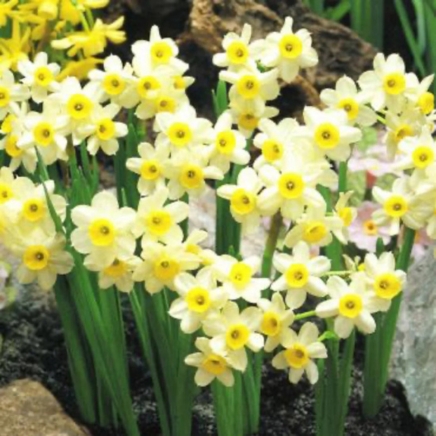
- Petite, cheerful miniature daffodils
- Easy to grow and maintain
- Mid-spring, fragrant blooms
- Compact size for small spaces
- Pollinator-friendly, attracts bees
A Note on Miniature Daffodils
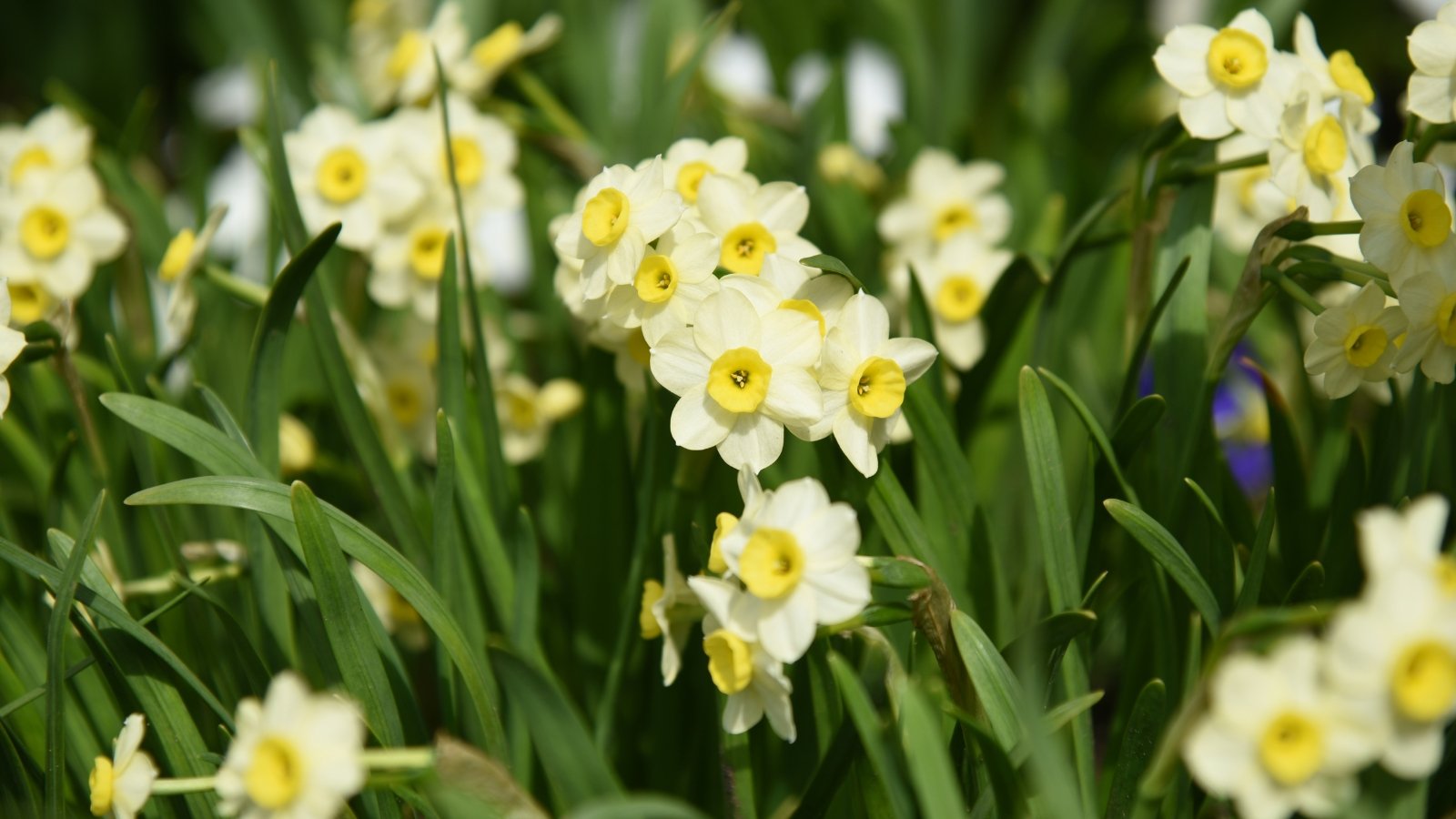
The Royal Horticultural Society has 13 descriptive divisions for daffodils based primarily on flower characteristics. The American Daffodil Society agrees that miniature types are not a separate division but a special class that reflects the same features as large varieties in smaller forms.
All parts of the plant, from foliage to flowers, are scaled down. While “miniature” is subjective, it usually refers to varieties around six inches tall, with flowers measuring less than 50 mm (1.97 inches).
Dwarf daffodils often fall into these divisions:
| Trumpet | quintessential appearance featuring a large, distinct corona (central “trumpet”) proportionate to or larger than the surrounding petals; produces a single flower per stem |
| Triandrus | pendant, drooping heads with reflexed (curling backward) petals; good fragrance and usually multiple buds per stem |
| Cyclamineus | small flowers with long cups and reflexed, swept petals; good performers in rock gardens, shade, and heavy soils |
| Jonquilla | multiple flowers per stem with shallow cups, good fragrance, and thin, reedy foliage; perform well in warm, Southern climates |
| Tazetta | floriferous with up to 20 buds per stem; round cups and small petals; also good for warmer regions |
| Bulbocodium | large, rounded trumpet and tiny, slender petals; commonly “hoop-petticoat” |
| Miscellaneous | includes miniatures that don’t fit into other divisions |
| Species | wild species and naturally occurring hybrids |
‘Little Gem’
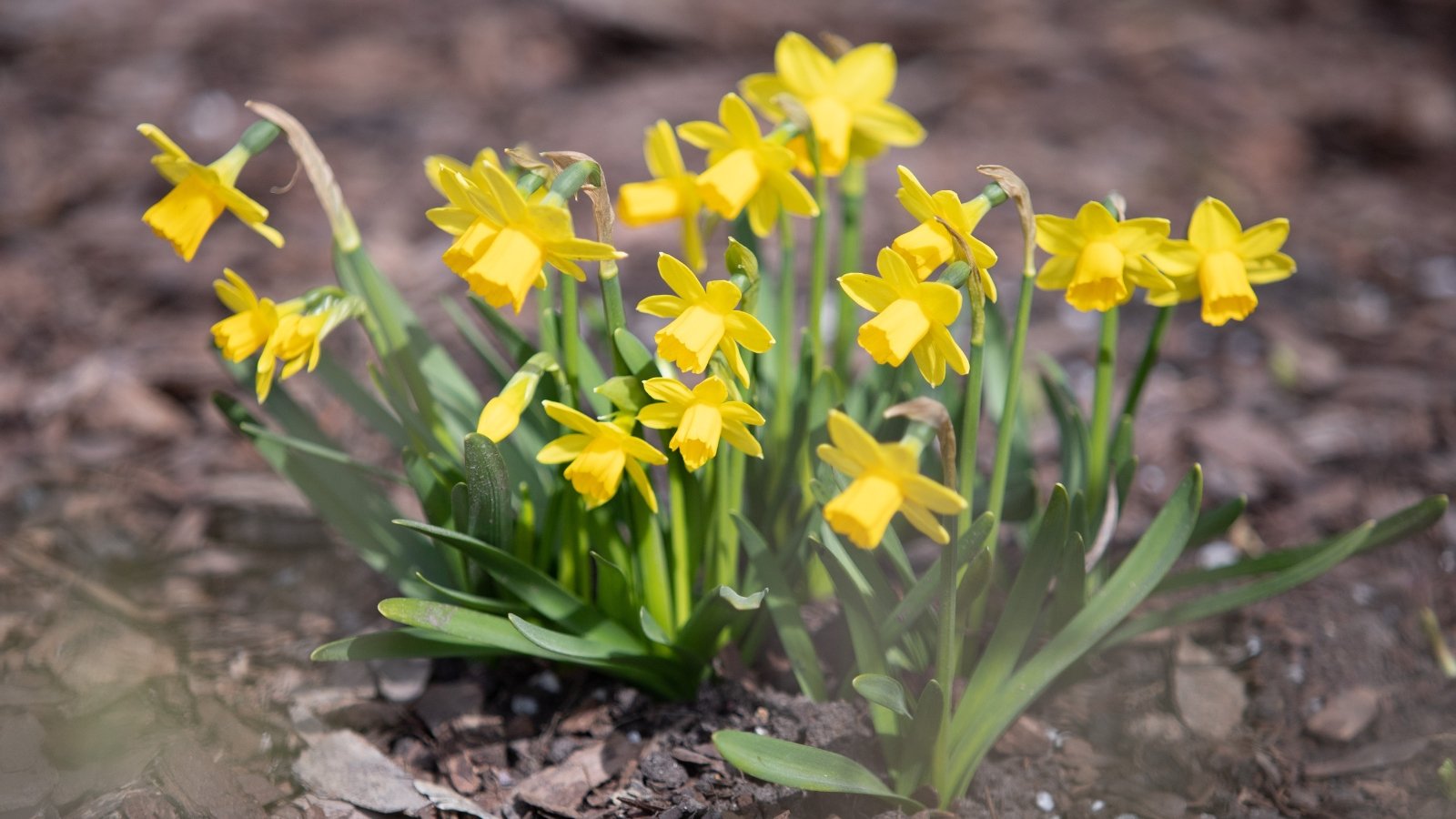
‘Little Gem’ is a historic miniature daffodil (pre-1938) with an early show of trumpet flowers. In light, sunny yellow, its petals overlap, and a prominent corona (central trumpet) has a darker yellow-orange rim.
‘Little Gem’ forces easily in pots. Plant these bulbs in late November, and they’ll bloom in time for holiday displays and gifts.
Renowned hybridizer J. Gerritsen and Son of the Netherlands made this selection, and it earned the Royal Horticultural Society’s Award of Garden Merit (AGM) for its strong performance across average conditions.
‘Minnow’
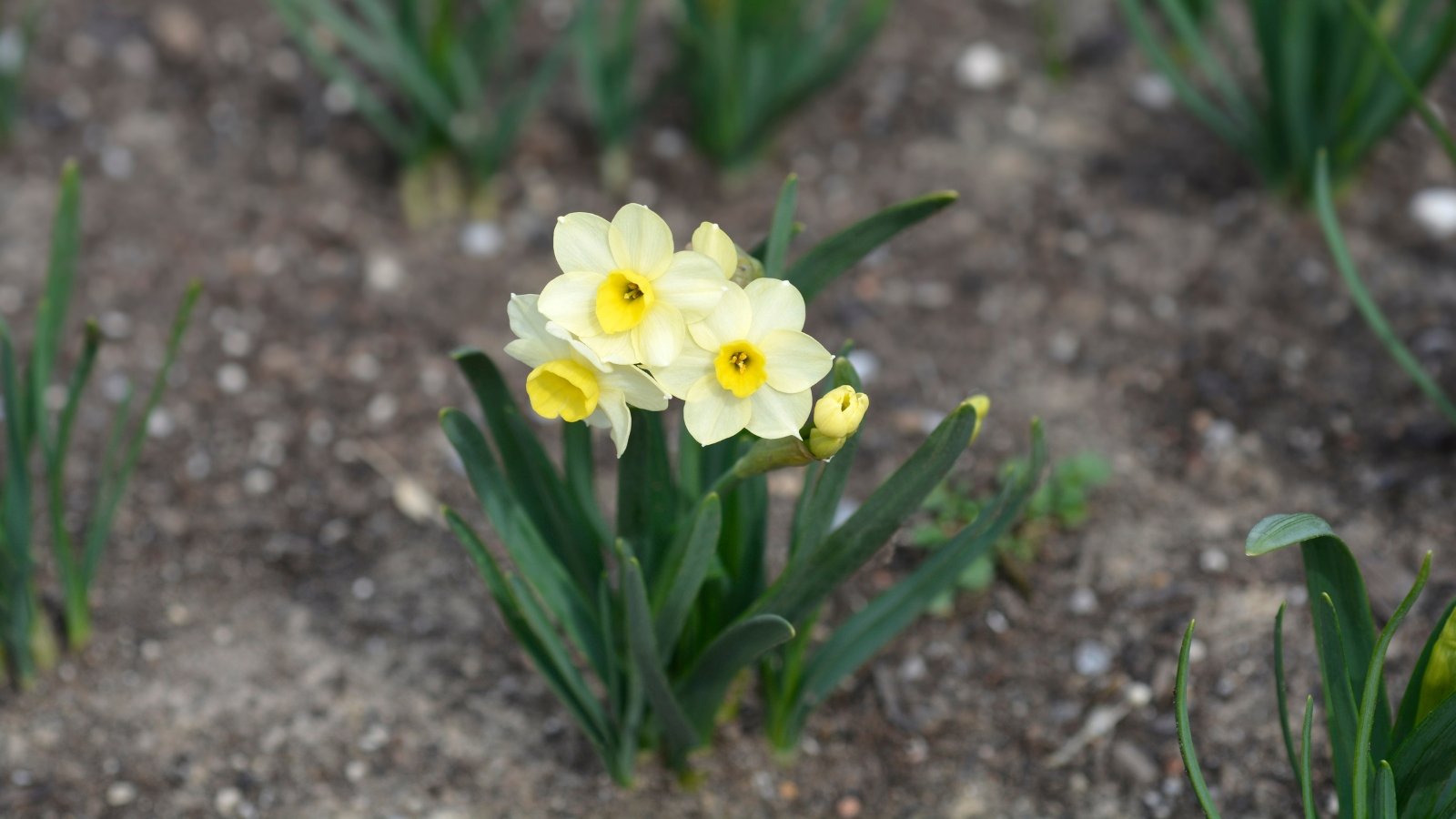
‘Minnow’ swirls with clusters of creamy white petals that surround a small, soft yellow corona. Bloom scapes appear mid-season with perky, outfacing flowers. Each rounded petal comes to an ornamental pointed tip.
‘Minnow’ is another AGM recipient and sturdy performer. A tazetta type, it holds three to five fragrant little blossoms per stem.
‘Baby Boomer’
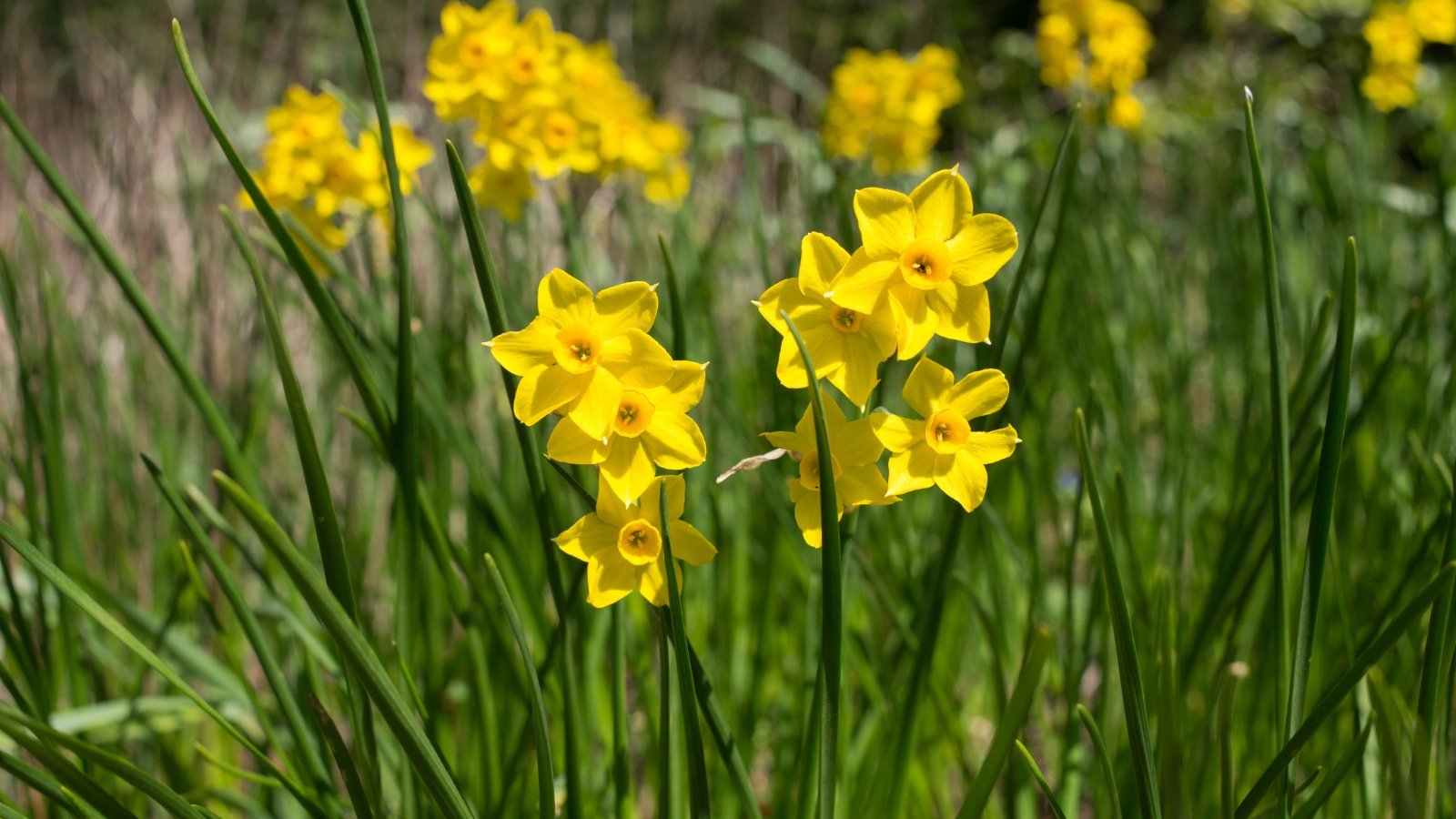
‘Baby Boomer’ is a showy jonquilla type. A floriferous variety, five to ten golden buds open per stem with a sweet fragrance to match the happy blooms. Each blossom is one and a half inches across with deeper orange cups.
From reputable Brent and Becky’s Bulbs of Virginia, this hybrid crosses the species N. jonquilla with N. ‘Avalanche.’ ‘Avalanche’ is a 1906 heirloom tazetta with a cascade of one-inch white flowers with greenish-orange bowl-shaped coronas. It grows 16 to 18 inches tall and perennializes well, even in warm climates.
‘Canaliculatus’
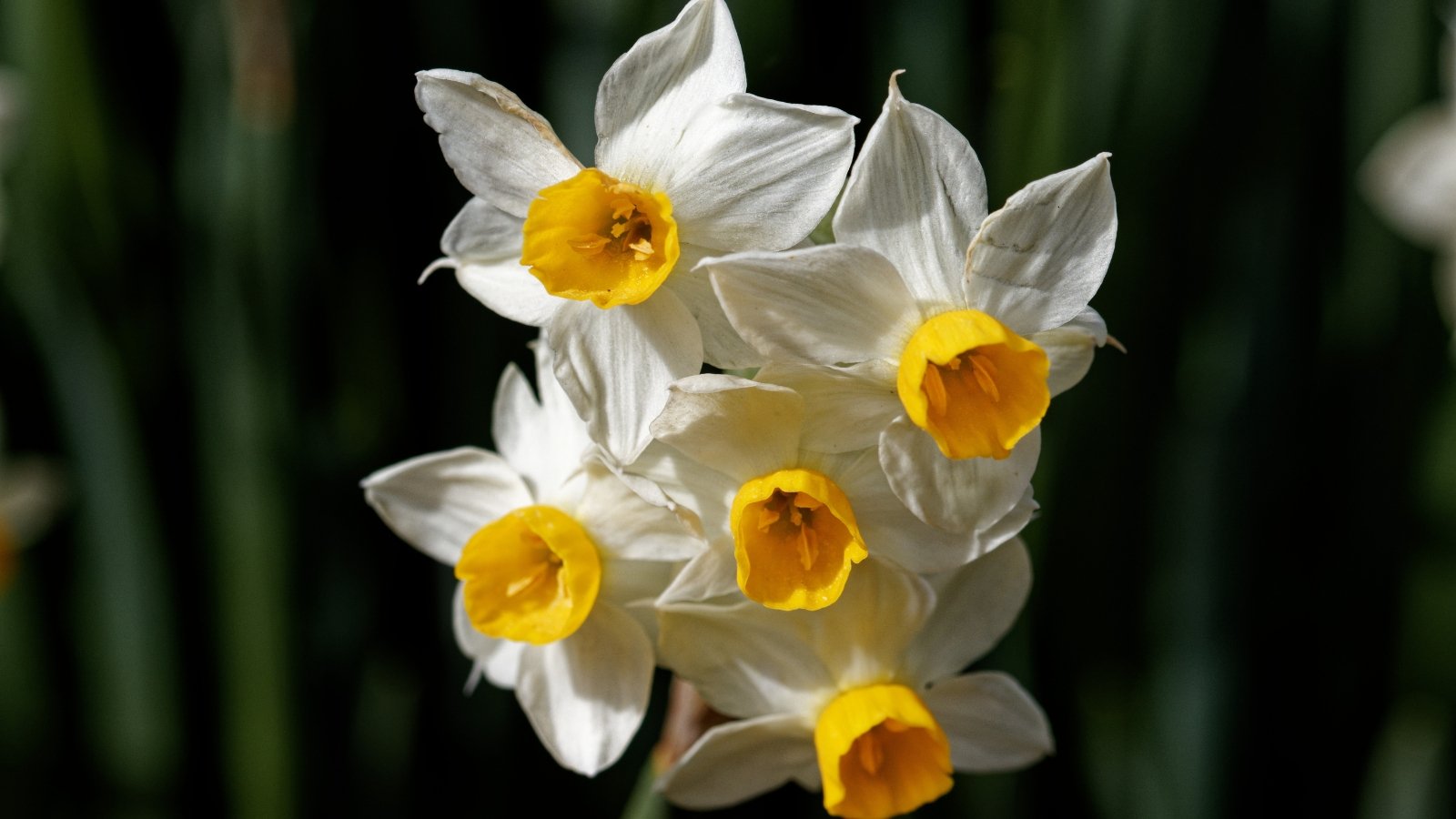
This historic tazetta is from 1915, and the early to mid-season bloomer remains popular today. Its slightly reflexed white petals trail behind leading yellow disks.
Each stem produces four to seven of the fragrant, crisp blossoms to grace the front of the border, patio container, and vase. They flourish in warm climates, preferring sunny locales.
‘Ice Baby®’
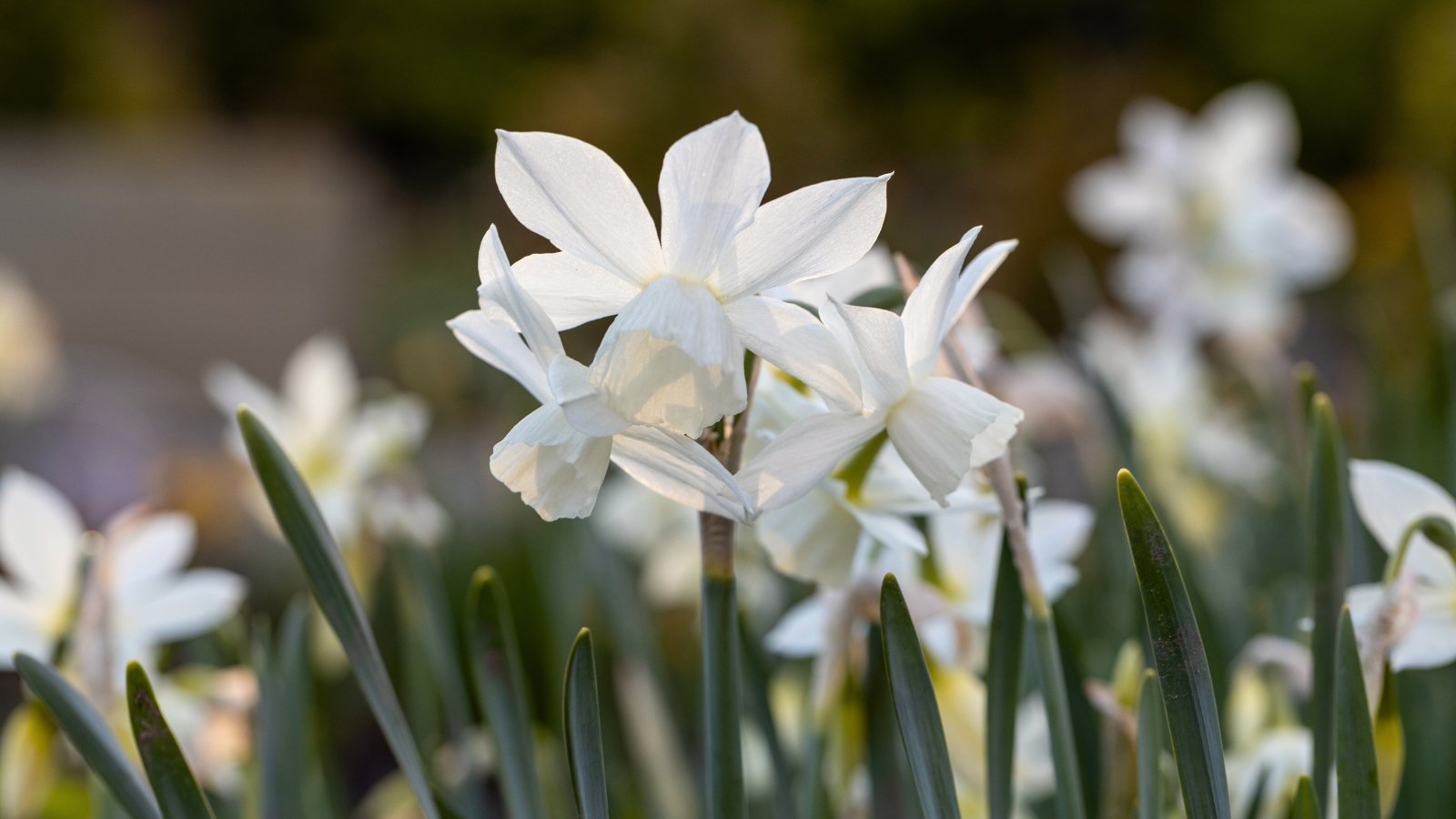
Also called ‘Snow Baby,’ this pure white bloomer has prominent trumpets with a slight frill at its rim. Petals emerge pale green and ivory and age to brighter white.
Another Brent Heath hybrid, ‘Ice Baby®’ lends a graceful elegance to the early spring display. The tissuey petals have a uniquely open, starry appearance. These force beautifully.
‘Sun Disc’
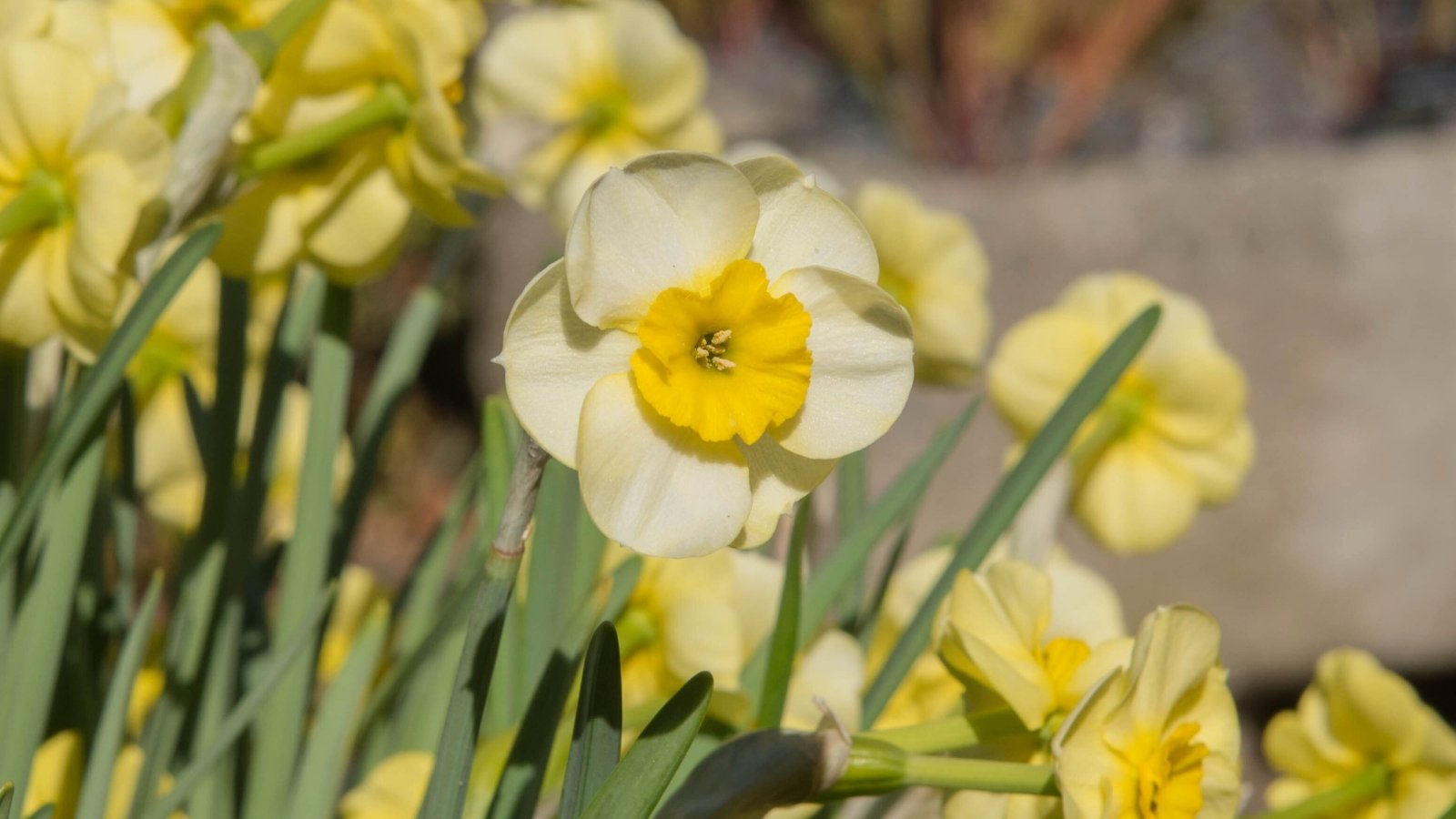
Late blooming and fragrant, ‘Sun Disc’ is a jonquilla that extends the season with a layer of joy. Overlapping, rounded petals emerge buttercup yellow and mature to creamy white. The corona is a flat, open disc in deeper gold.
‘Sun Disc’ has sunny-side-up flowers with prim appeal. The 1946 heirloom is a multi-award winter to include AGM and the American Daffodil Society Wister Award for garden performance.
‘Elka’
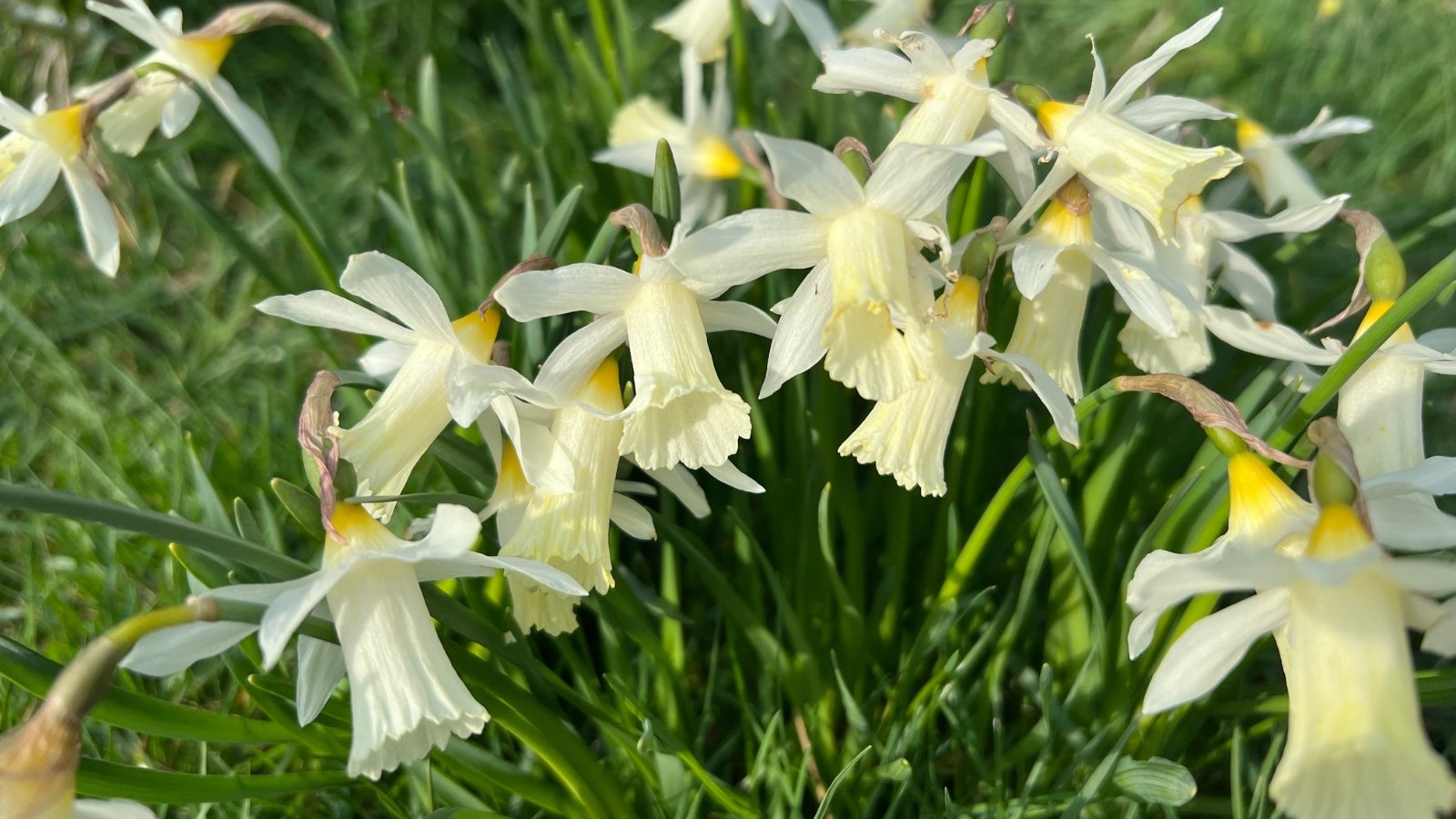
‘Elka’ is a classic white miniature trumpet type. The slightly frilled trumpet begins pale yellow and transitions to milky white, retaining yellow coloration where it joins the stem.
With distinct, pointed petals, ‘Elka’ forms a star shape on the stem. The AGM recipient is a favorite from renowned hybridizer Alec Gray of England.
‘Tete-a-Tete’
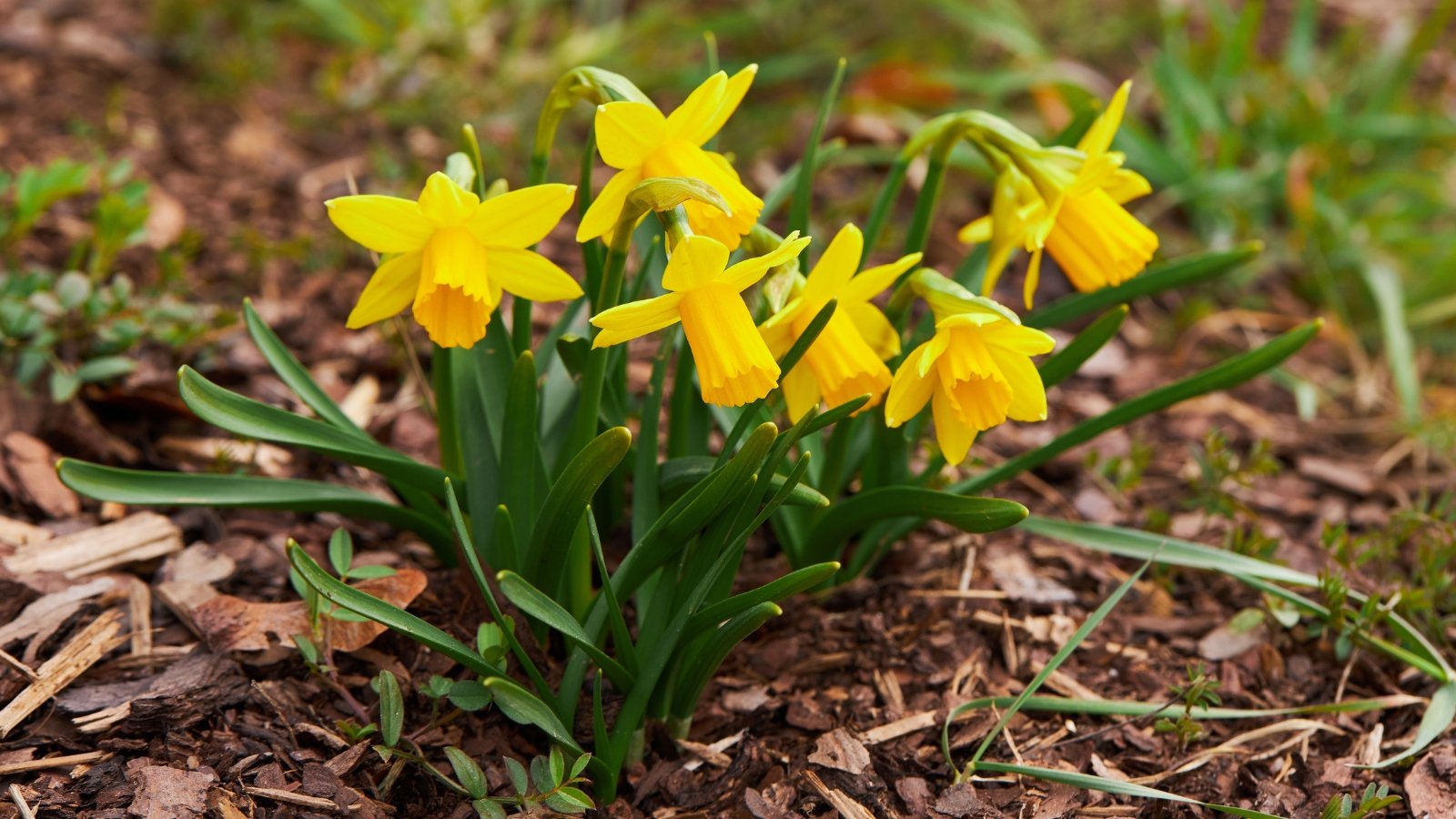
‘Tete-a-tete’ is a petite miscellaneous daffodil with buttery yellow cups and multiple blooms per stem. It sets numerous buds and is a sturdy, floriferous dwarf.
In a collection, these give an infusion of sunshine, offering high color and style with their crisp petals and ruffled cups on slender stems. Another Alec Gray award-winner, this 1949 beloved introduction boasts AGM and Wister status.
‘White Petticoat’
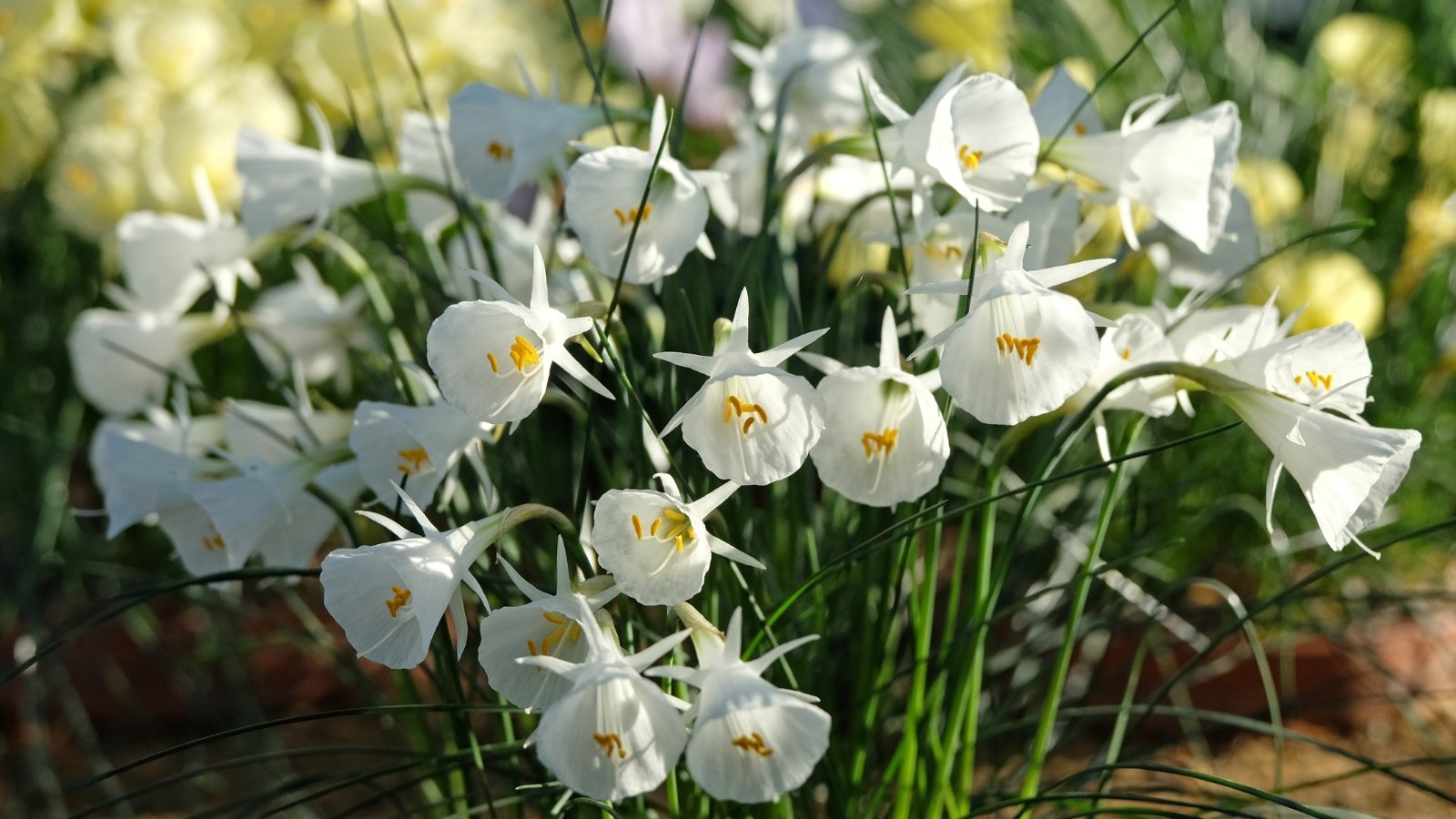
‘White Petticoat’ is a more recent (2017) registration and an award-winning bulbocodium hybrid. Broad, deep cups are the main feature, with an array of short, slender surrounding petals. The bowled cups, white with yellow centers, create papery hoop skirts.
Plant a dense group of ‘White Petticoat’ for a full and fragrant display. Parent plants are ‘Diamond Ring’ and N. cantabricus. ‘Diamond Ring’ is a bright yellow bulbocodium. N. cantabricus is a species in the wild variants division with historical recordings from 1816 and lovely white hoops.
‘White Petticoat’ emerges a yellowy, antique white and matures to milky white. They pair beautifully with ‘Golden Bells,’ similar in form with deep yellow hoops and petals.
‘Yellow Sailboat’
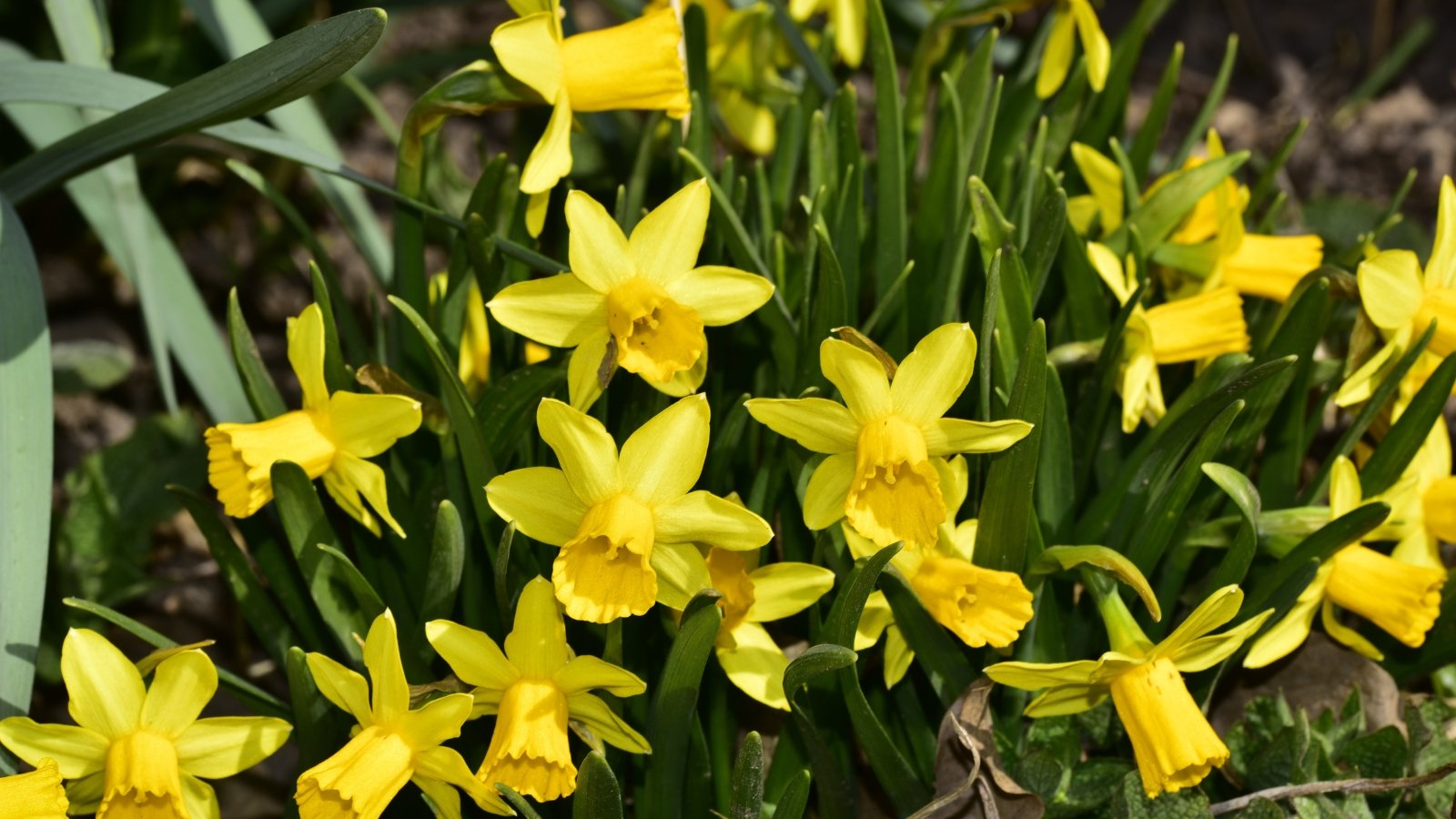
‘Yellow Sailboat’ is as cute as it sounds, appearing mid-spring to join taller flowering bulbs. Its upswept, reflexed petals on two-and-a-half-inch blooms “sail” in the breeze and in the display.
This is another sweet selection to force. ‘Yellow Sailboat’ is a sport of the Award of Garden Merit winner ‘Sailboat’ in lighter ivory and lemon shades. The jonquils are floriferous and fragrant if you capture a few up close or in a vase.
‘Tete Boucle’
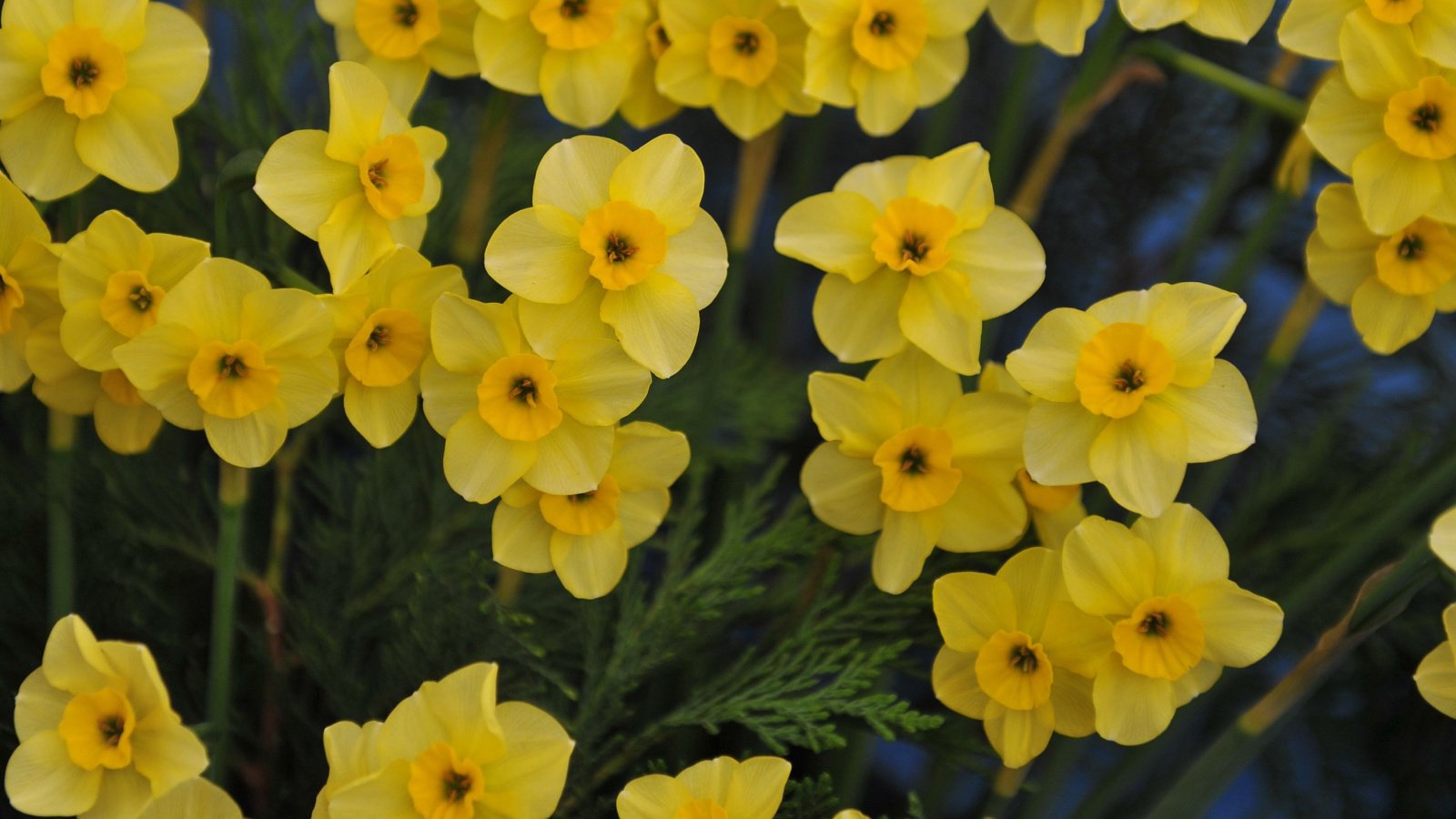
A sport of ‘Tete-a-Tete,’ ‘Tete Boucle’ is a stable, fully double mini daffodil. In the same golden yellow, layered centers create a lush, full flowerhead that sets this one apart.
The early-mid bloomer is ideal for featuring in pots where you can relish the details of the full flowers. It forces easily to enjoy indoors. It’s also a double dose of sunshine in fresh florals.
‘Hawera’
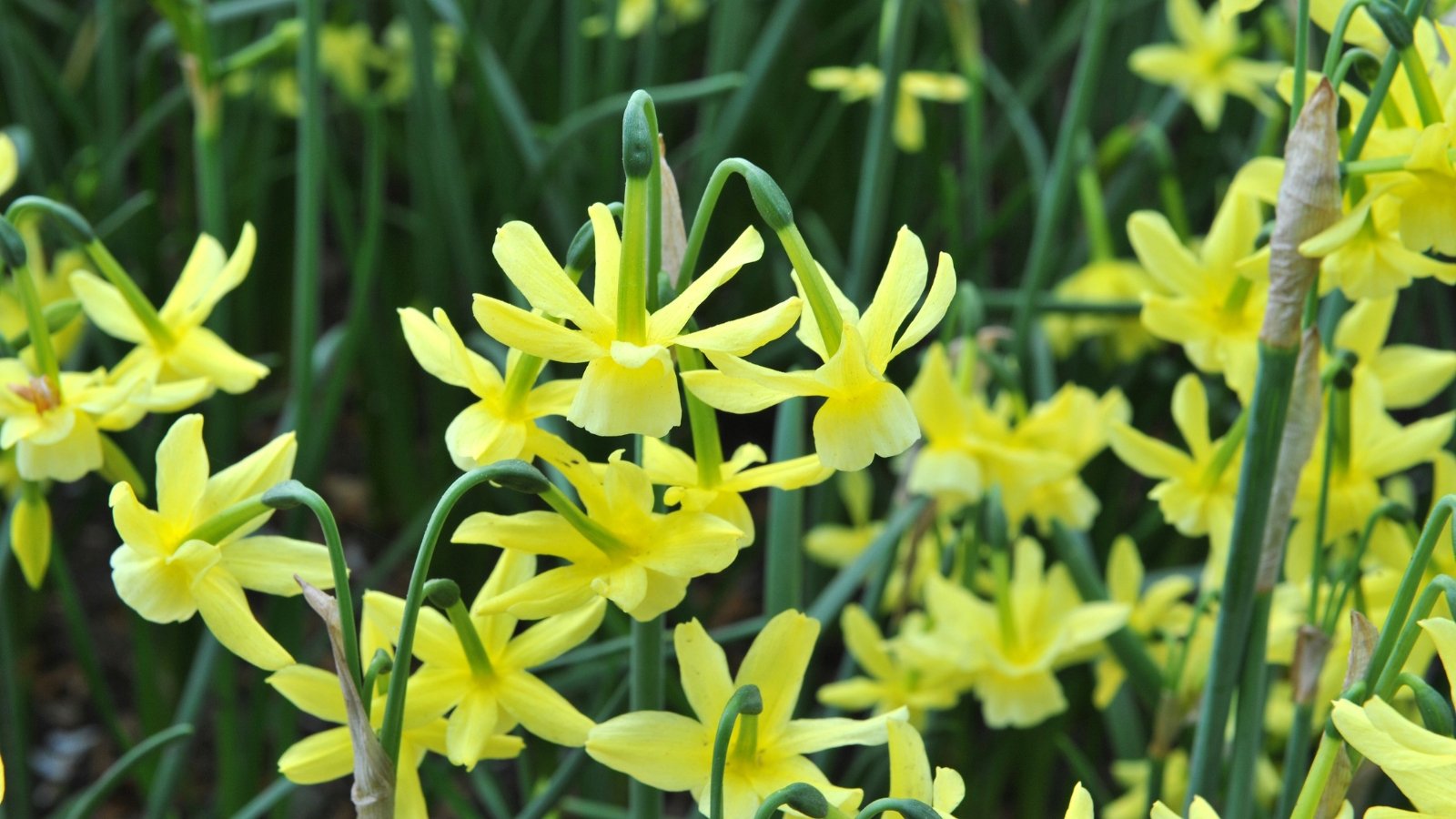
‘Hawera’ is a historic (1938) triandrus and AGM and Wister recipient. Triandrus have multiple blooms per stem, reflexed petals, and short central cups.
‘Hawera’ is a vigorous producer with up to nine stems per bulb, each with as many as eight pendant flowers (more likely four to six). Lemony petals surround pale yellow cups, which are mildly fragrant. Petals have an upswept quality behind the leading discs.
‘Hawera’ is named for a New Zealand town in its home country.
‘Golden Quince’
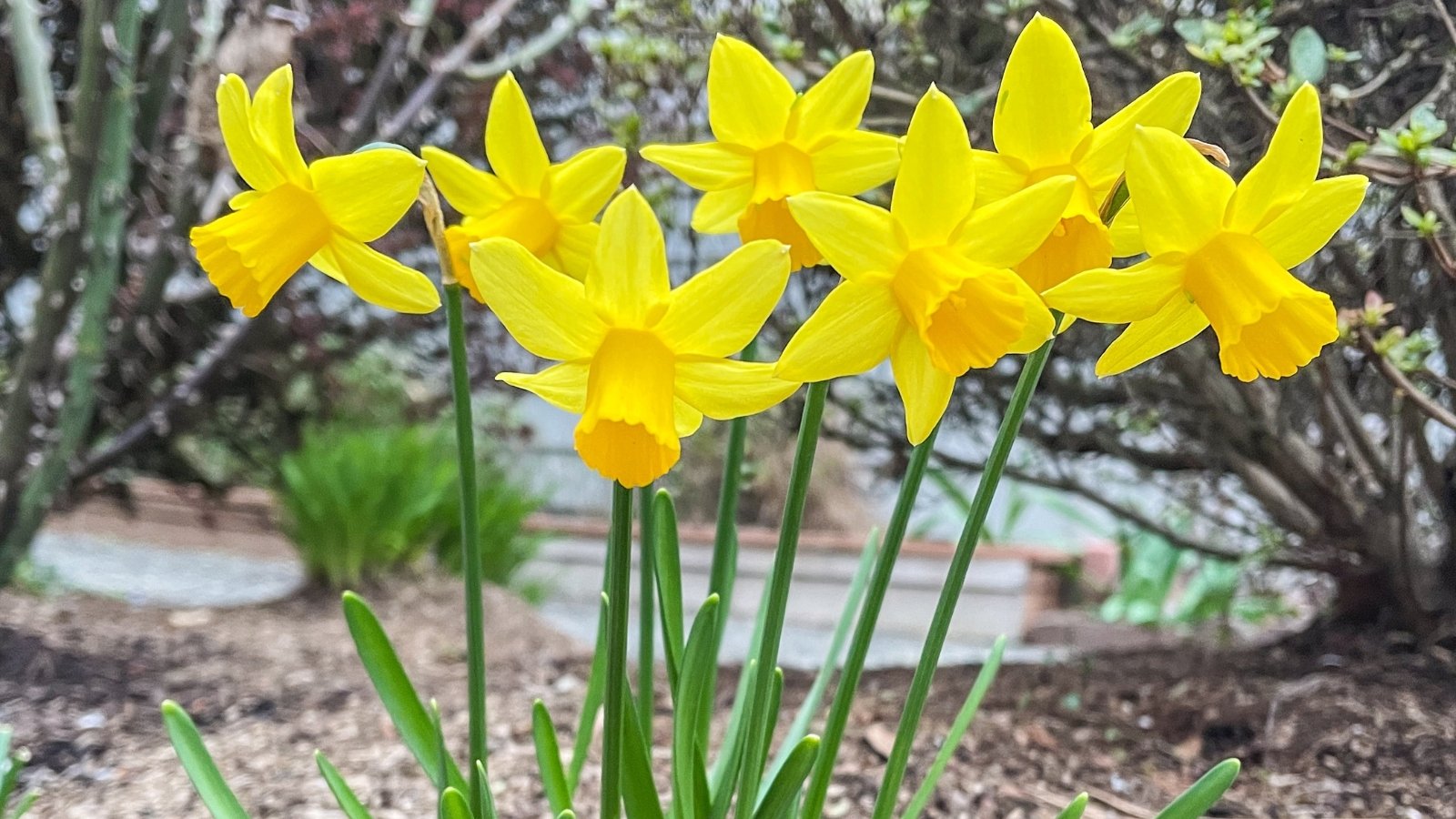
‘Golden Quince’ features canary yellow reflexed petals around a darker cup. It’s in the miscellaneous division as it doesn’t specifically fit the other categories.
‘Golden Quince’ is a mid-season bloomer with thin, strappy-bladed foliage that forms a small clump. It’s a sport of ‘Quince,’ a 1949 Alec Gray selection with primrose petals and a cylindrical corona.



